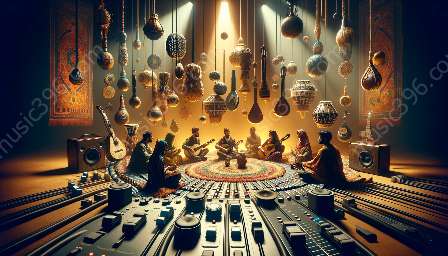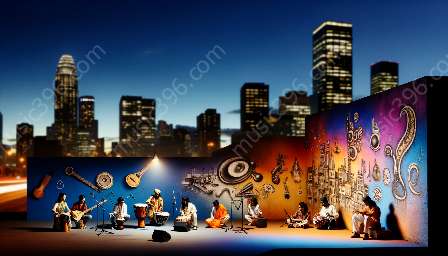South East Asian music encompasses a rich tapestry of traditions, instruments, and styles that have been integral to the region's cultural and spiritual practices for centuries. In recent years, there has been a growing interest in the therapeutic and healing aspects of South East Asian music within the field of ethnomusicology, as researchers and practitioners seek to understand and harness the restorative power of these musical traditions.
The Significance of South East Asian Music in Ethnomusicology
South East Asian music holds significant importance in the field of ethnomusicology, the study of music in its cultural context. The region's diverse musical traditions have provided valuable insights into the ways in which music serves as a medium for healing, spiritual expression, and community bonding. Ethnomusicologists have explored the intricate connections between music, spirituality, and well-being, shedding light on the profound impact of South East Asian music on individuals and communities.
Traditional Instruments and Healing Practices
The traditional musical instruments of South East Asia, such as the gamelan in Indonesia, the khene in Laos, and the khaen in Thailand, are revered for their therapeutic qualities. These instruments are often utilized in traditional healing practices, where their melodic tones and rhythmic patterns are believed to promote mental and physical well-being. Furthermore, the act of playing these instruments is seen as a form of spiritual meditation, conducive to deep relaxation and emotional release.
Cultural Influences on Therapeutic Music
South East Asian music is deeply intertwined with the region's diverse cultural tapestry, drawing influences from indigenous beliefs, animist traditions, and religious practices. The therapeutic aspects of this music reflect the cultural values and spiritual philosophies of each community, offering unique insights into the role of music in promoting harmony and balance within the individual and society as a whole. Through ethnomusicological studies, the healing attributes of South East Asian music have been linked to specific cultural beliefs and practices, highlighting the interconnectedness of music, culture, and well-being.
Role of Music in Spiritual Well-being
Music has long held a central role in the spiritual practices of South East Asian communities, where it is used to invoke healing energies, connect with ancestral spirits, and facilitate transcendental experiences. Through the use of traditional chants, ceremonial music, and ritual performances, individuals engage in sonic journeys that are believed to cleanse the body, mind, and spirit. Ethnomusicologists have documented the profound impact of music on spiritual well-being, demonstrating how South East Asian musical practices serve as conduits for inner transformation and holistic healing.
Modern Applications of Therapeutic Music
In contemporary society, the therapeutic and healing aspects of South East Asian music continue to be embraced and adapted for modern applications. Music therapy programs integrate traditional melodies and instruments into clinical settings, offering patients a culturally resonant approach to holistic wellness. Furthermore, the incorporation of South East Asian music into mindfulness practices, yoga sessions, and relaxation techniques has garnered attention for its ability to induce tranquility, reduce stress, and promote emotional balance.
Conclusion
The exploration of the therapeutic and healing aspects of South East Asian music within ethnomusicology has shed light on the profound and multifaceted roles of music in promoting well-being, spirituality, and cultural identity. As researchers and practitioners delve deeper into these musical traditions, they continue to unveil the transformative power of South East Asian music in fostering holistic healing and spiritual growth.



































